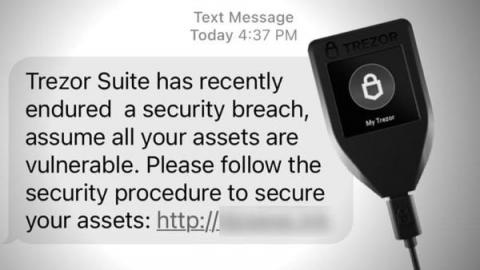Trezor crypto wallets under attack in SMS phishing campaign
Willie Sutton, the criminal who became legendary for stealing from banks during a forty year career, was once asked, "Why do you keep robbing banks?" His answer? "Because that's where the money is." However, today there's a better target for robbers today than banks, which are typically well-defended against theft... Cryptocurrency wallets.



